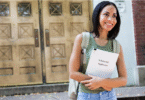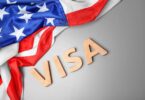The United States is a popular place for international students who want a good education and many learning opportunities. Schools in the US have great programs, modern research centers, and a diverse environment that helps students grow. However, before studying in the US, international students need a student visa. This visa allows them to enter, live, and study in the country legally. Understanding the visa process and its requirements makes the application easier and more successful.
US Student Visa Types
International students who want to study in the United States must apply for the right student visa based on their program. The US government offers three main types: F-1, M-1, and J-1. Each visa has its own rules, requirements, and limits. Knowing these differences helps students choose the right visa and follow US immigration laws.
F-1 Visa: For Academic Studies
The F-1 visa is the most common student visa, granted to those enrolling in academic programs at US institutions. It applies to students attending:
- Elementary and secondary schools (grades K-12)
- Colleges and universities
- Seminaries and theological schools
- Conservatories and fine arts institutions
- Language training programs
To get an F-1 visa, students must be accepted by a school approved by the Student and Exchange Visitor Program (SEVP) and stay enrolled full-time. F-1 students can work part-time on campus while studying. They may also qualify for Optional Practical Training (OPT) or Curricular Practical Training (CPT) to gain work experience in their field.
M-1 Visa: For Vocational and Technical Studies
The M-1 visa is designed for students pursuing vocational or technical education in fields such as:
- Mechanical training
- Culinary arts
- Cosmetology
- Aviation programs
- Other specialized trade programs
M-1 students, unlike F-1 visa holders, cannot work while studying, except in rare cases. They must also finish their coursework within the set program time since extensions and transfers are very limited.
J-1 Visa: For Exchange Programs and Cultural Exchange
The J-1 visa is for students and professionals in exchange programs that support education and cultural exchange between the US and other countries. These programs may include:
- University exchange programs
- Government-funded scholarships
- Research and teaching assistantships
- Internships and practical training programs
J-1 visa holders must have a sponsor from an approved exchange program. They may also need to return to their home country for at least two years before applying for certain US visas.
General Requirements for a US Student Visa
International students must meet certain requirements before they can apply for a US student visa. The US government has a process to make sure students are qualified, can afford their studies, and will follow visa rules. Meeting these requirements is important for getting a visa.
Acceptance into a US Institution (I-20 or DS-2019 Form)
Students must first gain admission to a Student and Exchange Visitor Program (SEVP)-approved institution. Upon acceptance, the school issues either:
- Form I-20 for F-1 and M-1 visa applicants.
- Form DS-2019 for J-1 visa applicants.
These documents confirm the student’s eligibility, program details, and financial information. Students must present the appropriate form when applying for a visa and entering the US.
Proof of Financial Capability
Applicants must show they have enough money to pay for tuition, living expenses, and other costs without working illegally. They can provide financial proof such as:
- Bank statements.
- Sponsorship letters.
- Financial aid or scholarship award letters.
- Affidavit of support from a sponsor.
A Valid Passport
Students must possess a passport valid for at least six months beyond their intended stay in the US. If the passport is close to expiration, renewal is required before applying for the visa.
Payment of Visa Application Fees
The US student visa application process includes mandatory fees:
- SEVIS I-901 Fee: Required for all F-1, M-1, and J-1 applicants to register in the Student and Exchange Visitor Information System (SEVIS).
- DS-160 Visa Application Fee: Payment is required before scheduling a visa interview.
- Reciprocity Fees (if applicable): Some applicants may need to pay an additional visa issuance fee based on their home country’s policies.
SEVIS Registration
SEVIS is an online system that keeps track of international students while they are in the US. After getting the I-20 or DS-2019 form, students must pay the SEVIS I-901 fee and keep their information updated during their studies.
Application Process for a US Student Visa
Applying for a US student visa has several steps, each needing careful preparation and documents. Following the process correctly makes the application smoother and improves the chances of approval.
Get Accepted by a SEVP-Approved Institution
Before applying for a student visa, applicants must be accepted by a school approved by the Student and Exchange Visitor Program (SEVP). SEVP, run by the US Department of Homeland Security, tracks international students to make sure they follow visa rules. Once accepted, the institution issues:
- Form I-20 (for F-1 and M-1 visa applicants).
- Form DS-2019 (for J-1 visa applicants).
These documents confirm program details, financial requirements, and SEVIS registration. Students must review them carefully and ensure all information is correct before proceeding with the visa application.
Pay the SEVIS Fee
All international students must pay the SEVIS I-901 fee before applying for a visa. This fee supports the Student and Exchange Visitor Information System (SEVIS), which tracks students during their stay in the US.
How to Pay the SEVIS Fee:
- Visit the official SEVP website.
- Submit the payment online using a credit card or through other accepted methods.
- Print and keep the payment receipt, as it is required for the visa application and entry into the US.
Complete the DS-160 Visa Application Form
The DS-160 form is the official online nonimmigrant visa application. Every student must complete this form before scheduling a visa interview.
- Visit the Consular Electronic Application Center (CEAC) website.
- Fill in personal details, education history, and travel plans.
- Upload a recent passport-sized digital photo that meets US visa requirements.
- Submit the form and print the confirmation page, which must be presented during the visa interview.
Pay the Visa Application Fee
The visa application fee (also known as the MRV fee) must be paid before scheduling a visa appointment. The amount varies by country and visa type.
- Use an approved payment method, such as bank transfer, online payment, or direct payment at designated financial institutions.
- Retain the payment receipt, as it is required to book the interview and for document verification.
Schedule and Prepare for the Visa Interview
Once all forms and fees are completed, students must schedule a visa interview at the US embassy or consulate in their home country.
- Visit the US embassy’s website and create an account.
- Select an available date and time for the interview.
- Receive a visa appointment confirmation.
Required Documents for the Visa Interview
- Valid passport (must be valid for at least six months beyond the intended stay).
- Form I-20 or DS-2019 (issued by the institution).
- SEVIS fee receipt.
- DS-160 confirmation page.
- Visa application fee receipt.
- Financial documents proving sufficient funds for tuition and living expenses.
- Academic transcripts and standardized test scores (if applicable).
Common Visa Interview Questions
- What is the purpose of your trip to the US?
- Why did you choose this specific institution?
- How will you fund your studies?
- Do you plan to return to your home country after completing your studies?
Frequently Asked Questions
What Financial Proof do I Need for a US Student Visa?
Bank statements, sponsorship letters, scholarship awards, or affidavits proving you can cover tuition and living expenses.
What Happens if My Visa Application is Denied?
You will receive a written explanation. You can correct issues and reapply if eligible.
Can I Travel Outside the US on a Student Visa?
Yes, but you may need a travel signature on your I-20/DS-2019 and must comply with US immigration rules.
Conclusion
Following the application steps, from getting admitted, paying fees, and preparing for the visa interview, helps increase the chances of approval. After arriving in the US, students must follow visa rules to avoid any problems with immigration.






